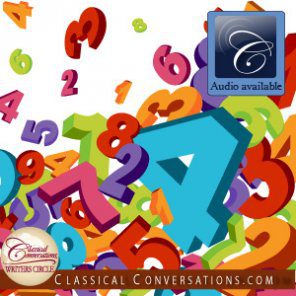What is the most valuable weapon a teacher or tutor wields? What can make a banal lecture bounce to life? What is the one thing guaranteed to wake the sleepy student? Questions! Throughout the history of classical education, teachers have used the simple question to invigorate the classroom setting. God uses questions to teach, too. To Job He asks, “Where wast thou when I laid the foundations of the earth?” (Job 38:4). In the New Testament, Jesus asks Peter, “But whom say ye that I am?” (Matthew 16:15). Questions are not unique to Christian thought. As Aristotle studied the nature of human thought, he developed a list of questions named the “five common topics,” which include definition, comparison, circumstance, relationship, and testimony. “Topic” comes from the Greek word topos, meaning “place,” and is the origin for English words like “topography.” “Common” means these places exist for every area of human thought. There are additional special topics for specific subjects. The five common topics are places where a person may go to think on any subject. We venture to those places via questions. In a Challenge A logic seminar, the five common topics encourage conversation by clarifying meaning, solidifying schema, and igniting students’ imaginations. Consider the problem x – 38 = 58 from Saxon’s 8/7 Lesson 18, mixed practice.
Instead of diving into a dry lecture of how to solve for x, ask the students “What do you see?” This is a circumstance question. You are looking for answers such as “an x,” “two fractions,” “a subtraction sign,” and “an equal sign.” Some students may add “common denominators” and “variable.” No answer is too obvious. In fact, celebrate the obvious! This is a place where students of any mathematics level can contribute freely.
After identifying the parts, ask some definition questions. For example, “What does 38 mean?” or “What is a variable?” You may choose to define every part students discover or to focus on the main idea of the lesson. Allow the conversation to develop naturally. Be patient. Persevere. They are learning. If the students seem confused or unable to define your focus, back up and try to define simpler parts of the problem and build to the mystery. Make sure the meaning of all parts is clear.
Depending on the idea you want to focus on, you may ask a relationship question at any time of the discussion. For example, “What do we need to know to solve this problem?” This question will begin to help students see how prior lessons and Foundations memory work help to work out present homework problems. Some answers you might expect for our example problem are “subtracting fractions,” “solving equations,” and “simplifying improper fractions.” You may choose to review these ideas during this part of the discussion or wait until later. Before moving to the next question, you might consider asking for and writing on the board each of the math laws memorized in Foundations.
Now that everyone knows and understands the parts of the problem, their schema is solid. Feel free to ask a testimony question such as “What law or laws will we use to solve this problem?” This is a delightfully dialectic exercise for Challenge A students. Integrating the memorized laws and real problems is the dialectic at its best. In the beginning, you and your students may not see all the laws used, but keep trying. For our example problem, we are using a form of the Identity Law of addition on the left side, – 38 + 38 = 0, and then using the Law of Equality for the right side. We can add 38 to both sides of the equation without changing the value of the equation since 38 = 38.
To entice your students who have mastered the given concept to deeper conversation, ask another circumstance question to keep them engaged like “Can any of the parts be written a different way?” Challenge them to think through all the different ways to write numbers. The Classical Conversations Trivium Tables®: Math is an excellent resource for this part of your discussion. Ask the students to discover at least three additional ways to write each of the terms in the given equation or expression. For our example problem, answers such as 9/24 , 0.375, or 3.75 × 10-1 would be appropriate. Thinking about different numeric expressions for equal values prepares the students for the next question in the conversation.
As students become comfortable with rewriting mathematical terms, ask the students a new question such as “Can we work this problem in a different way?” Compare the method one student chooses with another. Evaluate the benefits of different thinking patterns. Challenge your advanced students to work the problem in an unconventional order. For example, with our example problem, we could use the Law of Equality first, multiplying the entire equation by 8 and obtaining 8x – 3 = 5. Next, we could add 3 to both sides and use the Identity Law of multiplication to separate the coefficient from the variable. This is not an efficient method to solve this particular equation, but it ignites thinking!
In general, ask the questions in the order and number you determine will best fit your class and the situation. Some problems may require jumping straight to testimony or comparison (inequality problems, for example). Modify the five common topic questions as your understanding grows, and ask your students to compose their own common topic questions.
When you begin to transform your classroom environment from lecture to conversation, you will probably see looks of confusion, the shaking of heads, and some frustration. It is a rough adjustment for some students because they are no longer passively receiving information, but instead must engage with the tutor, teacher, and math problem to get the desired answers. They are being challenged to try something new in a subject area that may already have them feeling insecure. But remember, as Heather Shirley, Classical Conversations MultiMedia CEO, said, “Cultivating and nurturing another is a sobering work of endurance, long suffering, and self-sacrifice.”




